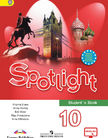Выбранный для просмотра документ The discovery of the structure of the DNAThe discovery of the structure and function of DNA.doc
Скачать материал "Презентация и видеофрагменты на тему Открытие структуры ДНК"
Рабочие листы
к вашим урокам
Скачать
Выбранный для просмотра документ The discovery of the structure of the DNAThe discovery of the structure and function of DNA.ppt
Скачать материал "Презентация и видеофрагменты на тему Открытие структуры ДНК"
Рабочие листы
к вашим урокам
Скачать

1 слайд
Shape
Size
Striking
Exactly
Long strand
Acid
DNA
Reveal
Pattern of life
Guanine
Adenine
Thymine
Cytosine
Nucleotides
Cardboard models
Breakthrough
Spiral
Форма
Размер
Поразительный
Точно, конкретно
Длинная цепочка
Кислота
Дезоксирибонуклеиновая кислота
Раскрыть, обнаруживать
Принцип жизни
Гуанин
Аденин
Тимин
Цитозин
Нуклеотиды
Картонная модель
Достижение, открытие
Спираль

2 слайд
Helix
Ladder rung
Coil
Unwound
Enzymes
Blow apart
Assemble
Strand
Bound
Спираль
Ступенька
Виток
размотанный
Энзим
Разлететься
Собираться, созывать
Цепь, нить
Связывать

3 слайд
Read the text and decide if the following sentences are true or false.
A particular species shares almost all its genes.
We get equal numbers of chromosomes from our parents.
Friederich Miescher immediately revealed the importance of DNA.
The four compounds of DNA are not the same size.
Watson and Crick did the computer modelling for nucleotide bases.
A new helix chain is assembled at a comparatively slow speed.

4 слайд
Striking, substance, breakthrough, compound, coils, strand, bound, revealed, organic base, pattern
What is the chemical ……… used in paint?
A sprung seat is made up of ……… of strong wire.
An important discovery that helps us find a solution is called a ………………… .
A long length of something is a …………… .
We can find a …………… if we watch something and see if it acts in similar ways over a period of time.
It was quite …………… how different the children were.
The sheets of paper where …………… together by string.
Mendel's discoveries …………… the secret of heredity.
A combination of two or more elements or parts is called a …………… .
A(n) …………… is an organic compound which acts as base.

5 слайд
Listen to a talk. Then compare the information about DNA.
Each strand has about …… billion letters of coding.
We inherit the information from our …..
DNA will be useful in the future for……care.
The Y chromosome comes from our ………
Archaeologists use DNA found in people’s …………
The police get information from DNA found at a ……

6 слайд
Discuss with your partner:
How is DNA useful to different people in different situations?
Talk about: archaeologists, doctors, the police

Рабочие листы
к вашим урокам
Скачать

Рабочие листы
к вашим урокам
Скачать
В представленной работе содержится текст о ДНК и о клонировании, об их роли в науке. Также, к данной теме подобраны видеофрагменты, которые можно использовать для введения темы и презентация с заданиями для обсуждения теста, словами, которые понадобятся учащимся для понимания текста и беседы по предложенной теме
6 656 218 материалов в базе

Настоящий материал опубликован пользователем Ключникова Наталья Вячеславовна. Инфоурок является информационным посредником и предоставляет пользователям возможность размещать на сайте методические материалы. Всю ответственность за опубликованные материалы, содержащиеся в них сведения, а также за соблюдение авторских прав несут пользователи, загрузившие материал на сайт
Если Вы считаете, что материал нарушает авторские права либо по каким-то другим причинам должен быть удален с сайта, Вы можете оставить жалобу на материал.
Удалить материалВаша скидка на курсы
40%Курс профессиональной переподготовки
300/600 ч.
Курс повышения квалификации
72 ч. — 180 ч.
Курс повышения квалификации
36 ч.
Мини-курс
6 ч.
Оставьте свой комментарий
Авторизуйтесь, чтобы задавать вопросы.